Welcome to the world of dog treadmills, where your furry friend can unleash their inner athlete and reach new levels of fitness.
Just like a personal trainer for humans, a dog treadmill is like having a loyal coach by your side, guiding your pup towards a healthier lifestyle. With the flick of a switch, your canine companion can embark on an exhilarating journey right in the comfort of your own home.
Gone are the days of unpredictable weather and limited exercise options. Say hello to consistent workouts that cater specifically to your dog’s needs. Whether it’s shedding excess weight or building muscle tone, a dog treadmill offers a safe and controlled environment for them to thrive.
But before you dive headfirst into this exciting adventure, it’s important to know how to introduce your pup to this new contraption and ensure their safety throughout each workout session.
So grab some treats and get ready to discover the wonders of the dog treadmill – because nothing beats serving our four-legged friends with the best care they deserve!
Key Takeaways
- Dog treadmills offer controlled exercise tailored to your dog’s needs, regardless of weather or physical limitations.
- Introducing your dog to the treadmill can be a fun and rewarding experience, using positive association and gradual introduction techniques.
- Safety tips for using a dog treadmill include supervising your dog, starting slow, and ensuring the treadmill is the right size and has a non-slip surface.
- Regular maintenance, including cleaning, checking for loose parts, and lubricating the belt, is crucial for the treadmill’s longevity and performance.
Benefits of Using a Dog Treadmill
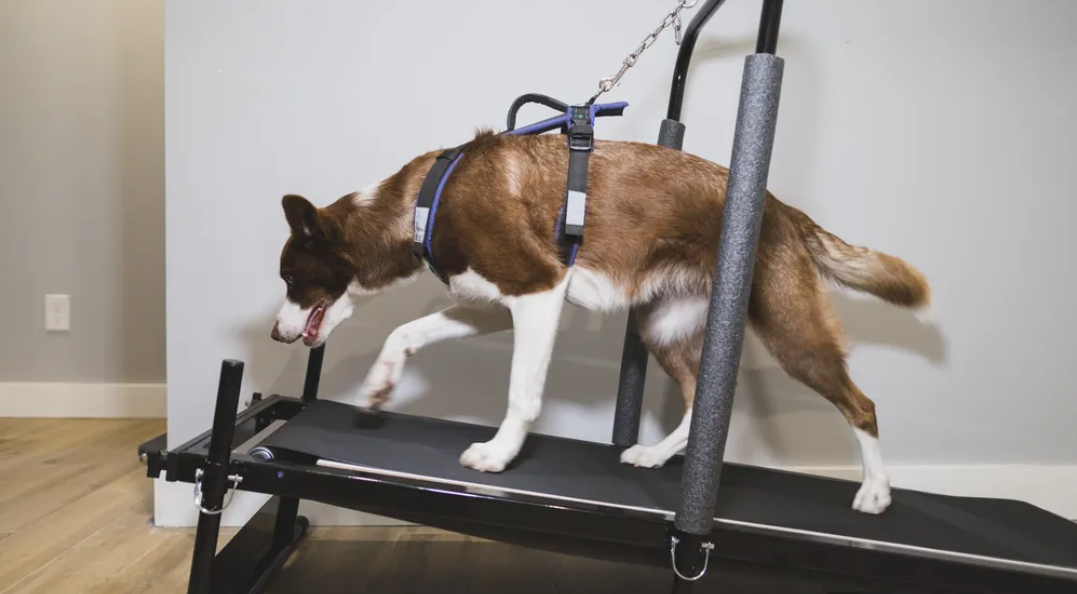
You’ll quickly see the benefits of using a dog treadmill, from helping your furry friend burn off excess energy to improving their overall fitness and mental well-being.
Dog treadmills offer a convenient way to exercise your dog, regardless of the weather or your own physical limitations. They provide controlled exercise that can be tailored to suit your dog’s specific needs, whether they’re recovering from an injury or simply need some extra exercise.
Additionally, different types of dog treadmills are available to accommodate dogs of all sizes and breeds, ensuring that there’s a perfect fit for every pup. Some models even come with additional features like adjustable speed settings and incline options for a more challenging workout.
With all these benefits at hand, incorporating a dog treadmill into your pet’s routine is definitely worth considering.
How to Introduce Your Dog to the Treadmill
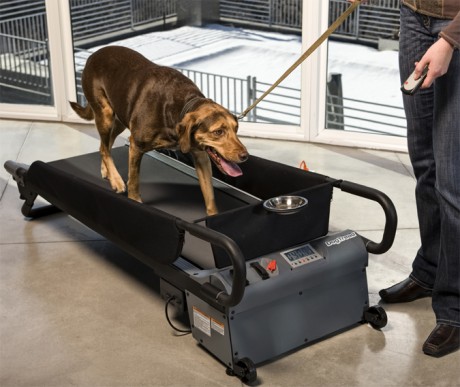
Don’t worry, it might feel strange at first, but introducing your furry friend to the treadmill can actually be a fun and rewarding experience.
Here are some training techniques to help you get started:
-
Create a positive association: Start by placing treats near the treadmill and gradually move them closer to build your dog’s confidence.
-
Gradual introduction: Begin with short sessions at a slow speed, allowing your dog to get comfortable with the movement.
-
Remember to reward good behavior: Praise and reward your dog with treats or verbal affirmations when they step onto the treadmill willingly.
Avoid these common mistakes during the process:
-
Forcing your dog: Never push or pull your dog onto the treadmill as it can create fear or anxiety.
-
Starting too fast: Begin at a slow pace and gradually increase speed over time.
By following these training techniques and avoiding common mistakes, you can ensure a smooth transition for your furry friend on their journey towards fitness.
Safety Tips for Using a Dog Treadmill
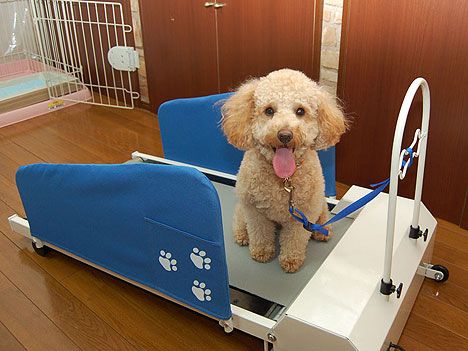
Stay safe and protect your furry companion with these essential tips when using a treadmill for your beloved pup. Dog treadmill safety should be a top priority to ensure a positive experience for both you and your dog.
First, always supervise your dog while they’re on the treadmill to prevent any accidents or injuries.
Secondly, start slow and gradually increase the speed and duration of the workout to avoid overwhelming your dog.
Additionally, make sure that the treadmill is properly sized for your dog’s weight and has a non-slip surface to prevent them from slipping or falling off.
Lastly, avoid common treadmill mistakes such as leaving loose objects near the machine or allowing children or other pets to play near it while in use.
By following these safety tips, you can create a safe and enjoyable exercise routine for your furry friend on the dog treadmill.
Choosing the Right Dog Treadmill for Your Pet
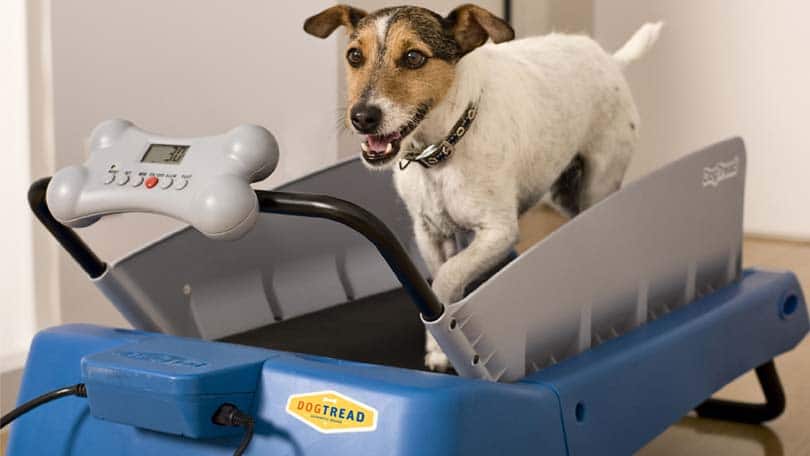
When it comes to selecting the perfect treadmill for your furry companion, finding the right fit and features is essential. There are various dog treadmill options available in the market that cater to different needs and preferences. Consider factors like size, weight capacity, speed settings, and safety features when making your choice.
It’s important to choose a treadmill that matches your dog’s size and activity level to ensure a comfortable and effective workout.
In addition to choosing the right treadmill, proper maintenance is crucial for its longevity and performance.
Regularly clean the treadmill to remove any hair or dirt buildup that can affect its function. Lubricate the moving parts as per manufacturer instructions to prevent squeaking or grinding noises. Check for any loose screws or bolts and tighten them if necessary.
Also, monitor your dog while using the treadmill and make sure they don’t chew on any parts or get their paws caught in gaps.
By selecting an appropriate dog treadmill and following these maintenance tips, you can provide your furry friend with a safe and enjoyable exercise experience.
Training Tips for Using a Dog Treadmill
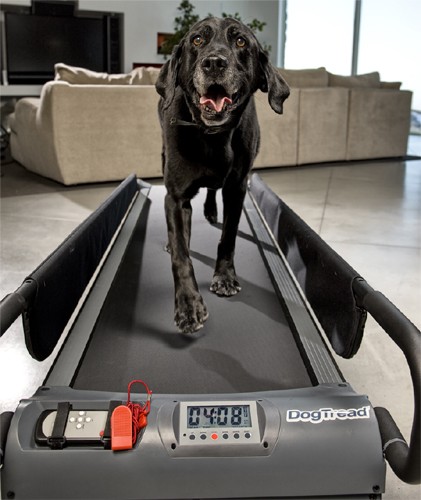
Get ready to unleash your pup’s full potential with these training tips for mastering the dog treadmill! Here are five important things to keep in mind when using a dog treadmill:
-
Regular maintenance is key: Make sure to clean and lubricate the treadmill regularly to ensure smooth operation and prevent any potential injuries.
-
Start slow and steady: Begin with short sessions at a slow pace, gradually increasing both speed and duration as your dog becomes more comfortable.
-
Positive reinforcement is essential: Reward your pup with treats or praise during and after each successful session on the treadmill. This’ll help them associate it with a positive experience.
-
Avoid common mistakes: Always supervise your dog while they’re using the treadmill, never leave them unattended. Also, avoid forcing your furry friend onto the machine or pushing them too hard.
-
Listen to your dog’s cues: Pay attention to any signs of discomfort or fatigue. If your pup seems stressed or tired, take a break and try again later.
By following these training tips and practicing proper maintenance, you can ensure that using a dog treadmill becomes an enjoyable activity that benefits both you and your beloved pet.
Incorporating Variations in Your Dog’s Treadmill Routine
Adding variations to your pup’s treadmill routine can keep them engaged and excited during their workout sessions. It’s important to vary the treadmill speeds to challenge your dog’s endurance and build their overall strength.
Start with a warm-up at a comfortable speed, then gradually increase the intensity by increasing the speed for short bursts of time. This will mimic interval training and help improve your dog’s cardiovascular fitness.
Additionally, incorporating incline training can provide an extra challenge for your furry friend. Gradually increase the incline on the treadmill to simulate uphill running or walking, which will target different muscle groups and enhance their overall fitness level.
Remember to always monitor your dog closely during their treadmill workouts and make adjustments as needed to ensure they’re safe and comfortable throughout the entire routine.
Monitoring Your Dog’s Progress and Fitness Level
Now that you’ve learned about incorporating variations into your dog’s treadmill routine, let’s focus on monitoring their progress and fitness level.
Tracking your dog’s progress is essential for ensuring they’re reaching their fitness goals and staying healthy. By keeping a close eye on their performance, you can make adjustments to their exercise routine as needed.
Setting goals for your furry friend can provide them with motivation and help you stay on track with their training.
To effectively monitor your dog’s progress, consider the following:
-
Keep a record of their workout sessions, including duration and intensity.
-
Use a fitness tracker specifically designed for dogs to track metrics like distance covered and calories burned.
Setting specific goals for your dog, such as increasing speed or endurance over time, will keep both of you engaged in the training process. Remember to always consult with a professional trainer or veterinarian to ensure your dog’s treadmill routine is safe and effective.
FAQs About Dog Treadmills
Curious about the contraption that turns your pup into a hamster on wheels? Well, let’s tackle some frequently asked questions about dog treadmills.
When it comes to dog treadmill maintenance, regular cleaning is essential. Wipe down the machine after each use and check for any loose parts or signs of wear. It’s also important to lubricate the belt periodically to ensure smooth operation.
Now, let’s address common mistakes when using a dog treadmill. One major mistake is starting at too high of a speed.
Always begin slow and gradually increase the pace as your dog gets comfortable. Another mistake is leaving your dog unattended while on the treadmill – always supervise them to prevent any accidents or injuries.
By avoiding these common mistakes and properly maintaining your dog treadmill, you can ensure a safe and effective workout for your furry friend.
Frequently Asked Questions
Can I use a regular treadmill for my dog?
Yes, you can use a regular treadmill for your dog as an alternative workout. It provides a convenient way to ensure your furry friend gets the necessary dog exercise they need.
What are the potential risks or dangers of using a dog treadmill?
To ensure the safety of your furry friend, it’s important to be aware of the potential risks of using a dog treadmill. Take necessary precautions such as proper introduction, supervision, and always following recommended guidelines for their well-being.
Can a dog treadmill help with weight loss or obesity in dogs?
A dog treadmill can be beneficial for weight loss or obesity in dogs. It provides controlled exercise, helping them burn calories and improve fitness. Compared to outdoor exercise, it offers a consistent and safe workout environment.
How long should I use the dog treadmill for each session?
To get the best results, aim for 20-30 minutes per session on the dog treadmill. Start slow and gradually increase speed and time to avoid overwhelming your pup. Remember, you’re helping them live a healthier life!
Are there any specific breeds or sizes of dogs that should not use a treadmill?
Certain breeds and sizes of dogs may not be suited for treadmill use due to their physical limitations. It’s important to consult with a veterinarian to determine if your specific breed or size falls into this category.
See Also:
-
Kong Dog Toys: The Perfect Gift for Any Pup
- Discover Exciting Dog Walking Jobs for Pet Lovers
Conclusion
Incorporating a dog treadmill into your furry companion’s fitness routine can have a significant positive impact on their overall wellbeing. By providing controlled and convenient exercise opportunities, a dog treadmill allows dogs to maintain an active lifestyle regardless of weather conditions or time constraints. It promotes physical fitness, mental stimulation, and can help manage weight and energy levels. With proper training and guidance, dog owners can enhance their pets’ fitness journey, ensuring a happy and healthy life for their beloved canine companions. Consider exploring the benefits of a dog treadmill and discover a convenient and effective way to prioritize your dog’s fitness and happiness.
Discover Your Perfect Canine Companion and Make a Lifesaving Difference Today! Embrace the Joy of Pet Adoption with Bone Voyage Dog Rescue.
